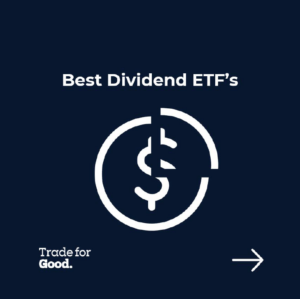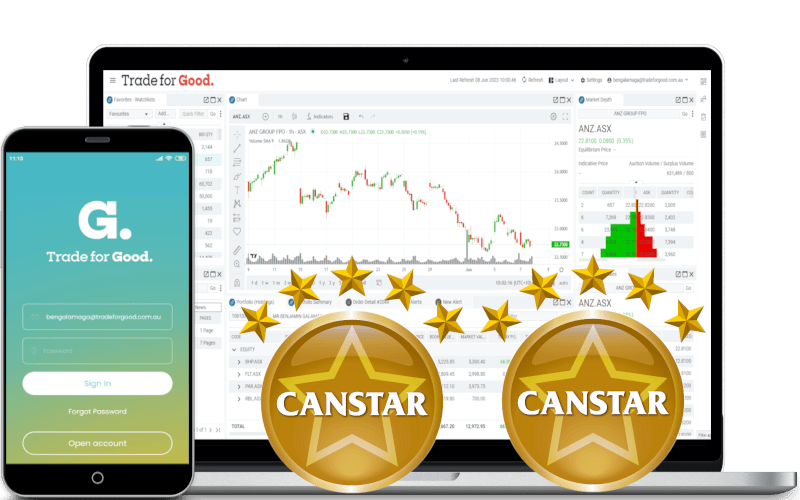 What Is a Dividend ETF?
What Is a Dividend ETF?
Dividend ETFs offer a convenient way to access multiple dividend-paying stocks in one go. These dividend ETFs are known as ‘high yield’ or ‘income’ ETFs.
All ETFs that include holdings of companies that pay dividends will deliver dividends to investors.
 Some ETFs focus on an investment strategy that prioritizes stocks likely to pay reliable dividends to shareholders.
Some ETFs focus on an investment strategy that prioritizes stocks likely to pay reliable dividends to shareholders.

Benefits of Dividend ETFs:
- You can self-manage your investments if your investment priorities change.
- ETFs generally have no minimum investment requirements.
- ETFs include a variety of stocks, which also means you’re instantly diversified.
- Many Australian companies pay fully or partially franked dividends, which means some or all of the tax has already been paid.

Downsides of Dividend ETFs:
- ETF management fees and you also need to pay brokerage fees each time you buy or sell.
- High dividends don’t correlate perfectly with rising share prices.
- No control over which assets or companies are in the dividend ETF.
- ETFs can be considered more tax efficient, but you’ll still need to carefully consider CGT and taxation around foreign income.

Different Types of Dividend ETFs:
Passive vs. Active ETFs
Passive ETFs match index funds, typically focusing on the top 200 companies, and they usually have lower fees.
Active ETFs involve a fund manager adjusting the stocks in the ETF according to their specific strategy, which typically attracts higher fees due to the added expertise.

ASX vs. Global Dividend ETFs
Large ASX companies have a good track record of paying reasonably generous dividends. Australian shares also tend to offer higher yields than global shares.
You can diversify and streamline your exposure to international markets through an ETF. The ASX also offers ETFs with holdings in global stocks that track US-based and other international indexes.

Metrics to Compare ETF Performance
- Total Return: Returns based on the price of the ETF.
- Dividend or Trailing Yield: Dividend yield percentage.
- Funds Under Management (FUM).
- Net Asset Value (NAV).
- Management Fees or Expense Ratio.
Index Tracking: Assessing how closely the return performance of the ETF tracks the return performance of the index.

Best Dividend ETFs
Name: Vanguard Australian Shares High Yield ETF (ASX:VHY)
Fee/Managed Expense Ratio: 0.25% p.a.
Dividend yield: 5.8%
Income distribution: Quarterly
Total return history over 5 years: 9.04%
 Name: SPDR® S&P®/ASX 200 Resources Fund (ASX:OZR)
Name: SPDR® S&P®/ASX 200 Resources Fund (ASX:OZR)
Fee/Managed Expense Ratio: 0.34% p.a.
Dividend yield: 7.34%
Income distribution: Twice a year
Total return history over five years: 13%

Name: Vanguard Australian Shares High Yield ETF (ASX:VHY)
Fee/Managed Expense Ratio: 0.25% p.a.
Dividend yield: 5.8%
Income distribution: Quarterly
Total return history over 5 years: 9.04%

Name: SPDR® S&P®/ASX 200 Resources Fund (ASX:OZR)
Fee/Managed Expense Ratio: 0.34% p.a.
Dividend yield: 7.34%
Income distribution: Twice a year
Total return history over five years: 13%
You can download the offline guide here Best Dividend ETFs Guide

What you learn here has been used in our Trade for Good software.
Click on the button to find our software education videos.
You can read more of our educational articles in the Trade for Good Learn section
Trade for Good Learn



